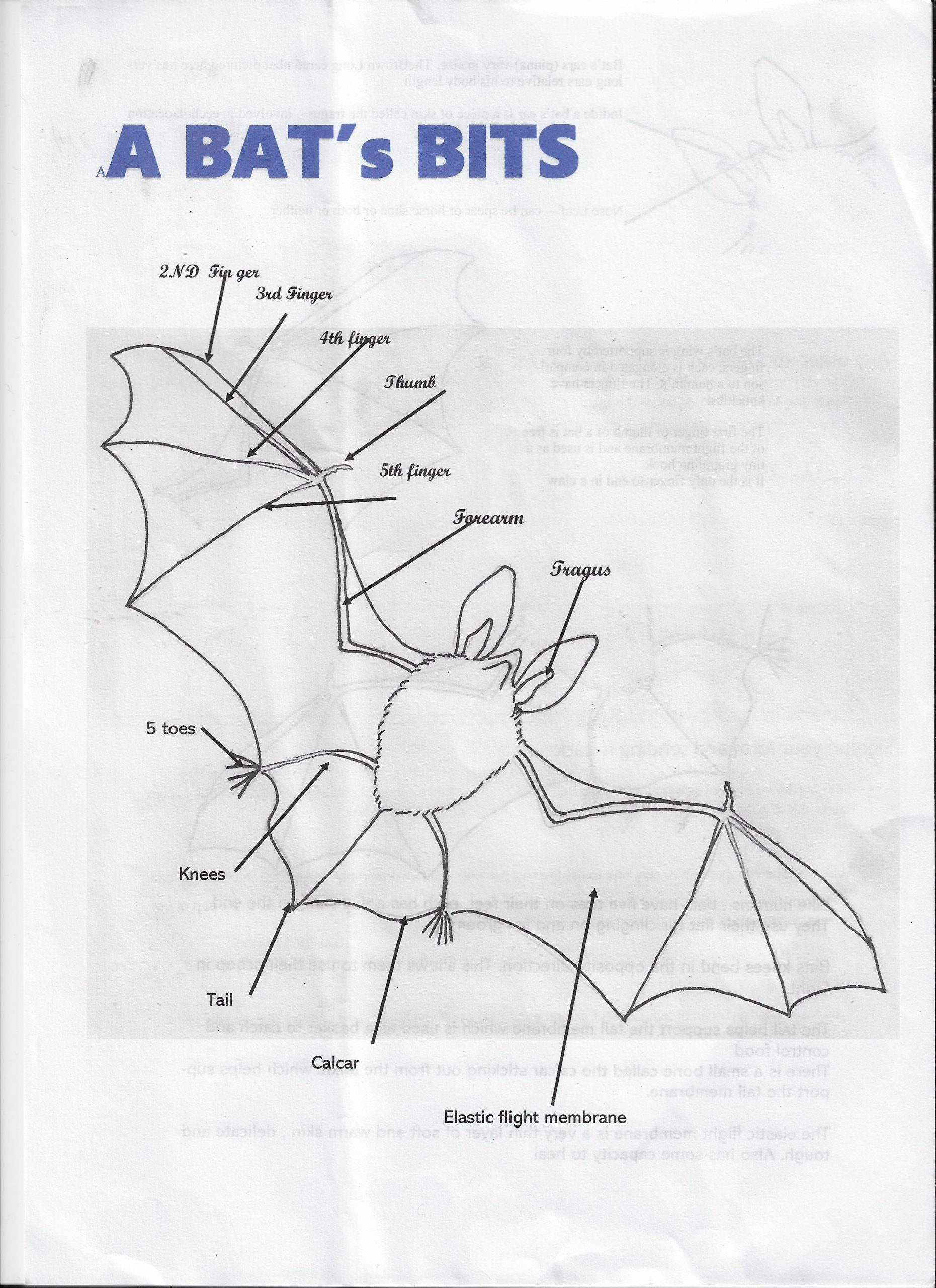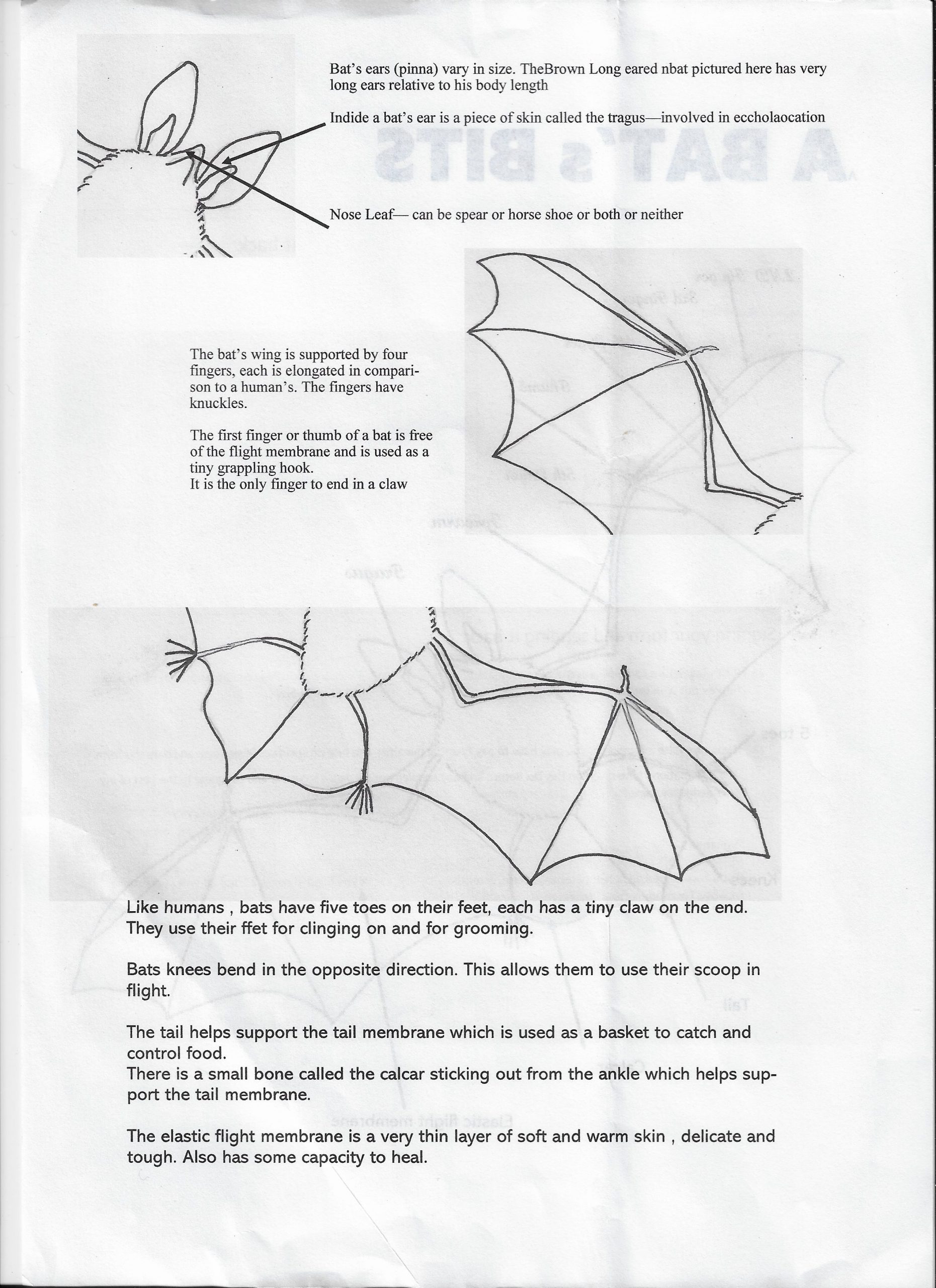Bat Facts
It has been estimated that pipistrelles can eat up to 3000 small insects a night.
The largest bats in the world are fruit bats. They are found in Africa, Asia and Australia. One species has a wingspan of almost 2 metres!
Bats are not blind! They can see in daylight but use echolocation to detect prey at night. Bats shout at frequencies too high for us to hear and listen for the returning sound. The returning echo gives information about their surroundings and the location and type of insects around.
Bats are very clean; they groom themselves and other bats within their colony. Their droppings are very dry, crumbly and harmless. The droppings also make excellent fertiliser for your garden!

British bats roost in a variety of places including holes in trees, caves, in buildings, bridges and bat boxes. Bats need different types of roosting places depending on the time of year.
When food supplies decline in winter, bats hibernate in cool, draught-free moist sites. Different species may use the same hibernation site. Hibernation sites in Lincolnshire include railway tunnels and old cellars.
During the summer, female bats occupy a different roost to raise their young (a maternity roost). Bats do not build nests, female bats give birth to one live young each year.


If you have a general enquiry:
Call 01526 344726 (between 9:00am and 5:00pm), or email via info@lincsbatgroup.co.uk
For grounded bat information, please click here!